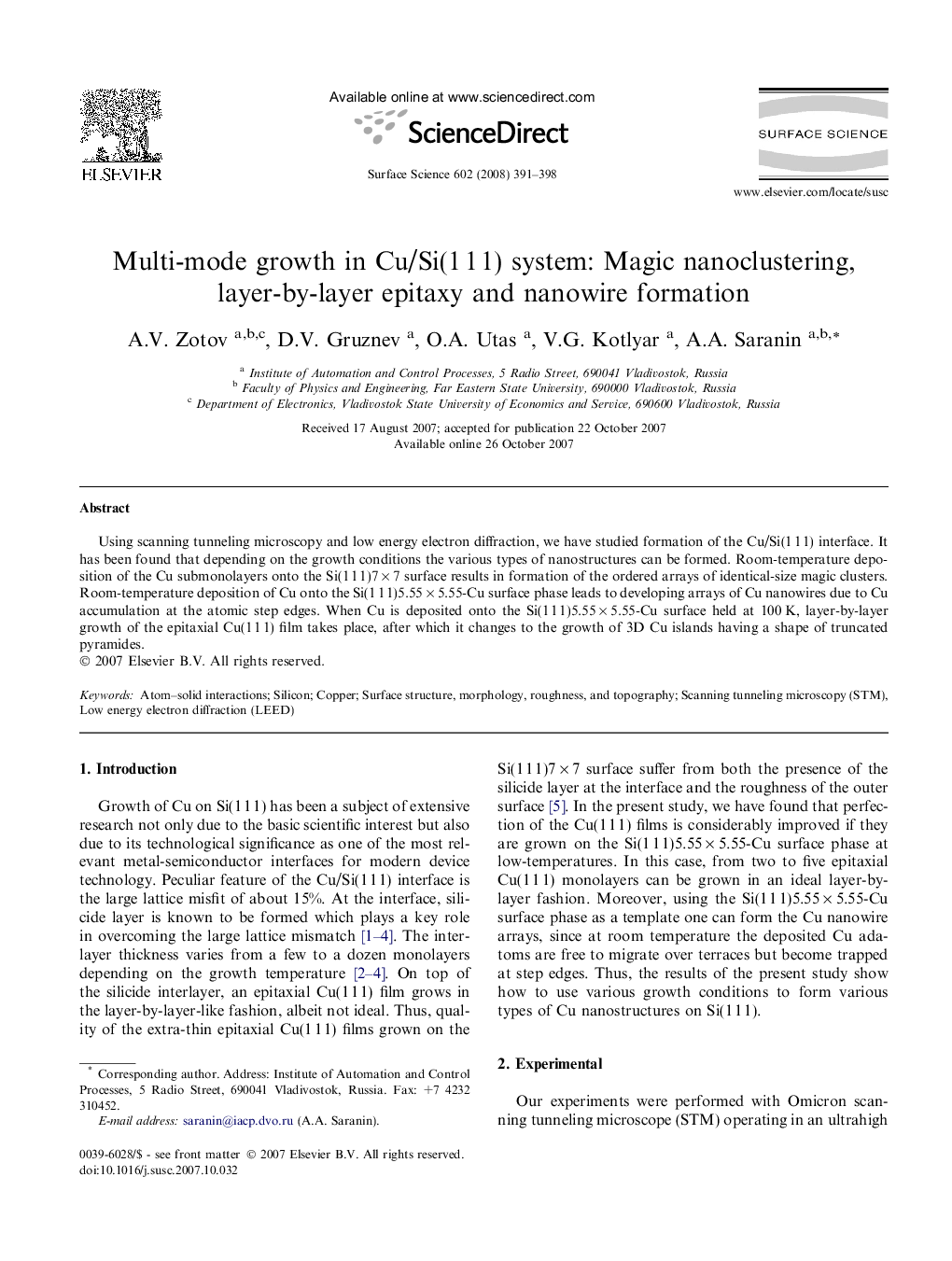| Article ID | Journal | Published Year | Pages | File Type |
|---|---|---|---|---|
| 5425384 | Surface Science | 2008 | 8 Pages |
Using scanning tunneling microscopy and low energy electron diffraction, we have studied formation of the Cu/Si(1Â 1Â 1) interface. It has been found that depending on the growth conditions the various types of nanostructures can be formed. Room-temperature deposition of the Cu submonolayers onto the Si(1Â 1Â 1)7Â ÃÂ 7 surface results in formation of the ordered arrays of identical-size magic clusters. Room-temperature deposition of Cu onto the Si(1Â 1Â 1)5.55Â ÃÂ 5.55-Cu surface phase leads to developing arrays of Cu nanowires due to Cu accumulation at the atomic step edges. When Cu is deposited onto the Si(1Â 1Â 1)5.55Â ÃÂ 5.55-Cu surface held at 100Â K, layer-by-layer growth of the epitaxial Cu(1Â 1Â 1) film takes place, after which it changes to the growth of 3D Cu islands having a shape of truncated pyramides.
